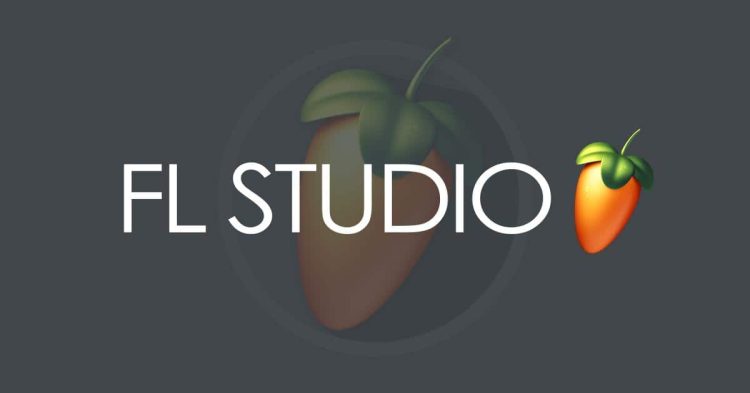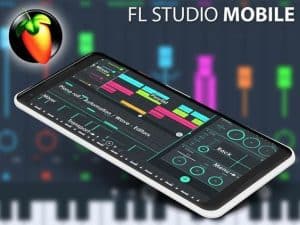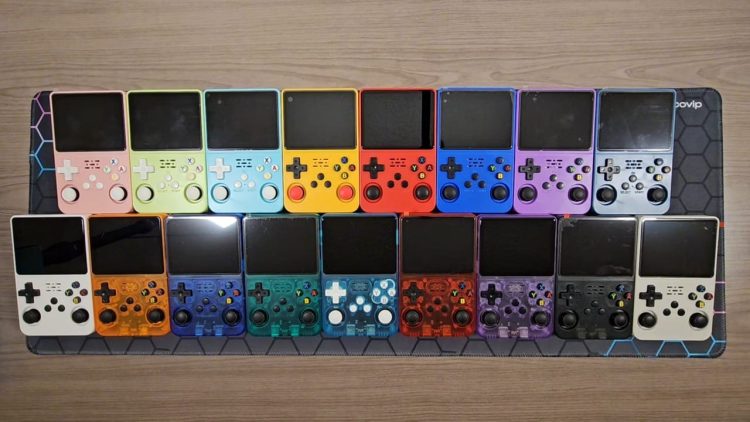FL STUDIO MOBILE is the mobile version of FL STUDIO Desktop DAW. For those who don’t know already, FL Studio (formerly known as FruityLoops from 1998-2003) is one of the most popular digital audio workstations trusted by many musicians and producers worldwide. Image-Line has released its mobile version for quite some time now. It is available for Android, iOS, Windows Mobile, and ChromeOS devices. But can it keep up with its desktop version legacy or even the mobile DAW competition? Is it useful for non-pros and pros? Let’s find out.
Tested on Android 5.0.2 and Android 10 smartphones, and on an Asus Chromebook, all updated to their latest versions.
Some Words, Introduction, and User Experience
I have been using FL Studio Mobile for a long time, since the initial FLM2 version. Back in the day, I was using it on a low-spec Android device (LG Bello 2, Android 5), and it performed well considering my smartphone’s capabilities. FLM3 was a significant update, almost re-constructing the app from its core. FLM users were given the option to upgrade or keep the old version. The major problem was the newer version’s compatibility with projects created on the old platform. They also offered a zip apk file of FLM2 to install on Android devices using the Unknown Source method. If you upgraded, there was another way to retain your projects, but it wasn’t hassle-free. You could export them as midi files, write down the instruments used, and rebuild them on FLM3. As I mentioned, it was just an option.
The newer FLM version was much better in simplicity and user interface. The performance was still satisfying for my low-spec device. It suffered some bugs, instabilities, and incompatibilities with some devices (e.g., external MIDI devices). Still, I must admit that the FLM Team did a great job dealing with them if reported to their official forum. Of course, some bugs are still present at the time of this article’s writing (version 4.5.9), but there aren’t any major ones. But is there any app that doesn’t have issues? The essential part is that the app is in active development and support, and the FLM Team is there to help you if you need to. After upgrading to a better device, the experience was on another level (Android 5 devices are still supported), as expected.
Performance-wise, the app responded well, but some crashes and time-outs, especially in more demanding projects, were present. And they still are, but that depends mainly on the project. Nothing is perfect. What was a pleasant surprise was the performance and the whole experience on my Chromebook. Everything was much better, and the app didn’t suffer from the “screen resolution issue” other mobile apps face on Chromebooks. I mostly use FL STUDIO MOBILE on my Chromebook for the more demanding projects. If you own a Chromebook, you should install the app there.
Performance, how to use it, and what to expect
As mentioned, the app is light and performs well even on lower-spec devices. But if you want the best user experience, a higher-end device is a better option, and if you own a Chromebook, don’t hesitate to install it. The app occasionally has some bugs, but as it is updated frequently, there is no reason to focus on them, as newer versions might resolve them. The overall performance is good.
The FL Studio Mobile has the same philosophy as its desktop cousin. It relies on WYSIWYG notes in piano form on a pattern-based music sequencer. Thus making it an excellent option for beginners and occasional users who want to experiment with a DAW. Simplicity doesn’t mean a lack of performance and options, though. But don’t expect the mobile version to replace the desktop version. It would be best to consider it a companion for the FL Studio Desktop. A helpful app for on-the-go projects and then rearranged in a desktop DAW for better results. It is a good entry into the DAW world, but don’t expect to be transformed into Dr. Dre by your phone.
The FLM costs around $15, so it doesn’t come free, but all things considered, it is a fair price for such a promising DAW. But this price tag is only for the basics, and although it offers a variety of free tools and instruments, you will soon realize that you need more. And the FL Studio packs don’t come free or cheap. For a decent set of tools, you should pay around $50 more for official FL libraries. This means around $65 including the FLM necessary apk. You can add or make your own, of course, but if you are a beginner, you must rely on Image-Line’s official libraries for the best results. And this will heavily depend on what you want and need. My purchased packs cost me about $85 ($100 with the apk).
You can download them from your Image-Line account and add them to your FL STUDIO Desktop if you own one. Regarding the desktop version, you can add the FLM as an extra tool if you want to. FLM doesn’t offer free versions, so there isn’t an official way to try before you buy. You can only try it on its desktop version. The desktop version offers a demo with limited functions to test it (keep in mind that older demo versions included adware, but that doesn’t seem to be the case in newer versions).
I can understand why Image-Line doesn’t offer a trial version, but downloading FL Studio Demo Desktop to test the apk is not an option either. Image-Line should change its policy, as FL Studio products are their flagship. A trial version is necessary for potential buyers. Just my two cents, though. The real question is: Should you spend a respectable sum of money on a promising mobile DAW that is best only for on-the-go projects? The conclusion is my answer.
Conclusion
FL STUDIO MOBILE is an interesting option for potential music producers or enthusiasts. It is one of the best of its kind, and you can’t go wrong with it if you are willing to pay and know what to expect. It can’t replace a decent desktop DAW but can be the perfect companion. Mobile DAWs still have a long way to go before becoming capable competitors to their desktop relatives. That being said, FLM comes with great potential. I expect better from the FL STUDIO Team in the future. Moreover, Image-Line should consider a trial version to attract more potential buyers.
FL STUDIO MOBILE is available for every mobile platform (iOS, Windows Mobile, Android, and ChromeOS. Note that my Apple M1 is marked as compatible through the Apple Store, but I didn’t find any official documentation about it). Its desktop version is compatible with Windows and MacOS, so combined, they are a versatile option. So, to whom is the FLM for?
If you expect a complete replacement for your desktop DAW, this option is not for you. It is an excellent option if you want a mobile companion and are willing to pay for it. While it is a hassle-free option for beginners, that heavily depends on whether you are willing to pay for it. It is not ideal for professionals because it is limited, as are all the mobile DAWs. The price tag is a drawback if you want a free mobile DAW to test your skills. Keep in mind, though, that it is one of the simplest and best-built mobile DAWs on the market.
So, to sum up, if you are willing to pay and invest in one of the best mobile DAWs, then FLM is the right choice for you. If you want something to begin your music journey for free, then the price tag is something you have to consider. You can’t go wrong with it, but you must pay for it. FL STUDIO is one of the best DAWs out there. It is not, by chance, one of the most popular. Professionals are entrusting it to their projects. But are you willing to pay for it? As always, the choice is yours.
Results
( 0 is the minimum, 5 is the maximum )
- Overall performance: 4 / 5
- Features: 4 / 5
- Usability: 4.5 / 5
- Performance: 4 / 5
- Value for money: 3.5 / 5
- Support: 4 / 5
- Audio quality: 4 / 5
- Projects importing: 4 / 5
- Projects exporting: 4 / 5
- Projects quality: 4 / 5
- Light app
- Easy to use
- Excellent mobile companion
- Performance
- Offers a wide variety of tools and plug-ins
- Cross-platform
- Frequently updated and a good level of support
- Compatibility with external devices (depending on the device)
- It can be used as a tool on the FL Studio desktop version
- It comes at a price without a trial version
- Some tools and plug-ins need an extra learning curve and occasionally don’t respond well
- Additional cost if you want to purchase FLM packs
- Limited because of its mobile nature
- Sequencing and organizing could be better





Please help me to download the app
Hello I want to make music of Limpopo I need your help
I dont even know what you mean.
Quiero a fl estudio
Thanks a lot for the amazing post, It truly means a lot to me.
I love this DAW. I purchased it and most of the packs it offers. I went from knowing nothing but mixing other people’s samples on Bandlab to learning how to write my own from scratch using Flm. Also, learned a lot about mixing from the YouTube tutorials. I’ve made hundreds of tracks that sound great on some Bose! They are all unique sounds but still in the same genre range. Worth the $$
Do you create tutorials on how to use it?
It is a vey good idea, and I would, but… This kind of tutorials are better only on vid rather than article. But I would really consider it.
YouTube had a lot of them